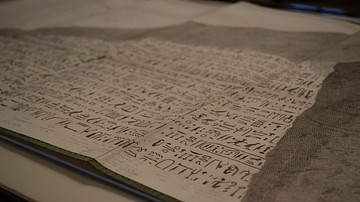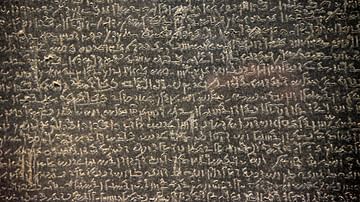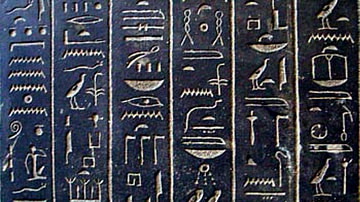Illustration
The Rosetta Stone is an incomplete grey and pink granodiorite stela dating from 196 BCE which presents a priestly decree concerning King Ptolemy V of Egypt. The text is in three different versions: Hieroglyphic, Demotic and Greek. The stone was discovered at Port Saint Julien, el-Rashid (Rosetta) on the Nile Delta in Egypt in 1799 CE by Pierre Francois Xavier Bouchard. Thomas Young first identified some of the hieroglyphs related to Ptolemy V but the full text was deciphered by Jean-François Champollion in the early 1820s CE and so the meaning of Egyptian hieroglyphs, lost for 1600 years, was finally re-discovered. (British Museum, London)
References
- Rosetta Stone TranslationAccessed 1 Dec 2016.
- Rosetta Stone at the British MuseumAccessed 1 Dec 2016.
Cite This Work
APA Style
Museum, T. o. t. B. (2014, January 02). Rosetta Stone. World History Encyclopedia. Retrieved from https://www.worldhistory.org/image/2198/rosetta-stone/
Chicago Style
Museum, Trustees of the British. "Rosetta Stone." World History Encyclopedia. Last modified January 02, 2014. https://www.worldhistory.org/image/2198/rosetta-stone/.
MLA Style
Museum, Trustees of the British. "Rosetta Stone." World History Encyclopedia. World History Encyclopedia, 02 Jan 2014. Web. 01 May 2024.






